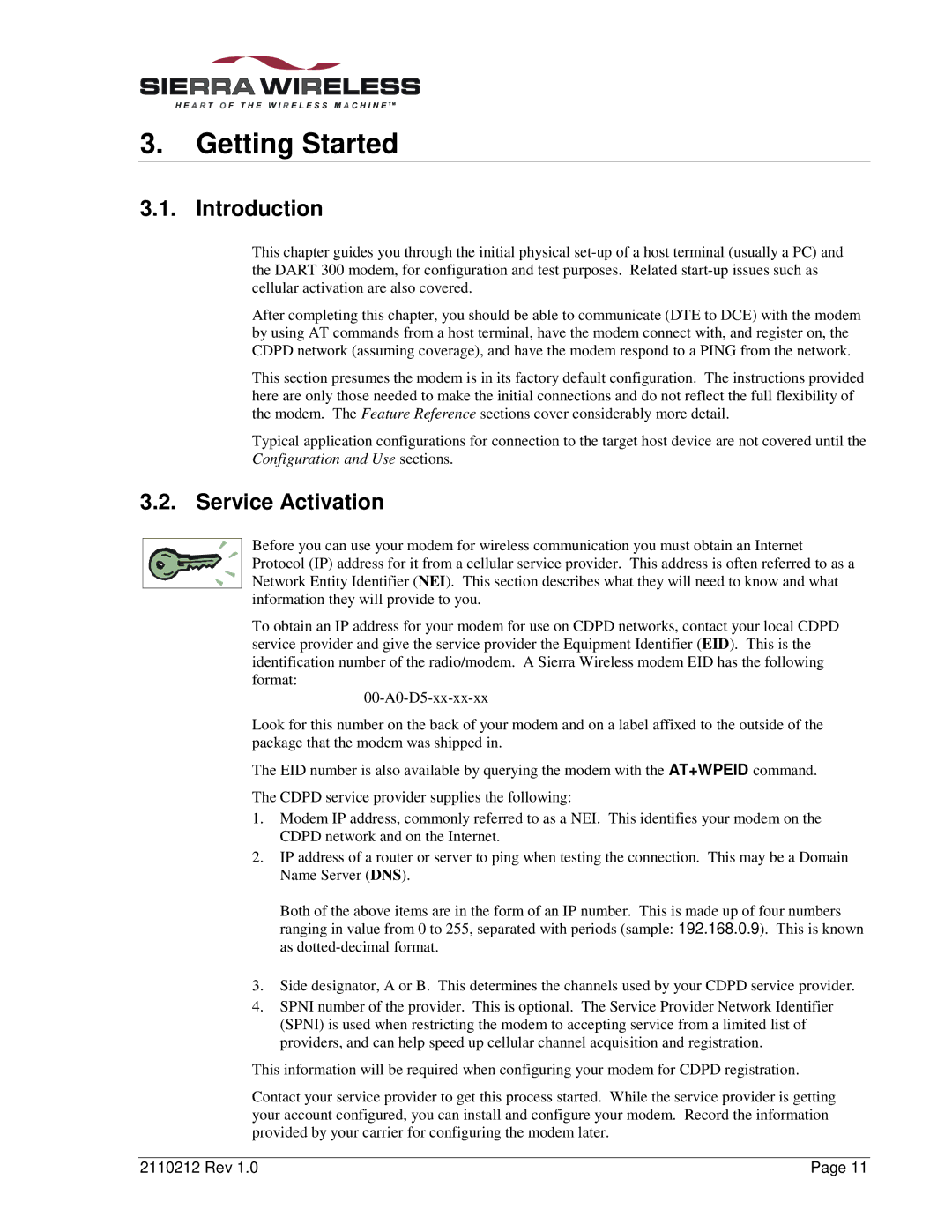
3.Getting Started
3.1. Introduction
This chapter guides you through the initial physical
After completing this chapter, you should be able to communicate (DTE to DCE) with the modem by using AT commands from a host terminal, have the modem connect with, and register on, the CDPD network (assuming coverage), and have the modem respond to a PING from the network.
This section presumes the modem is in its factory default configuration. The instructions provided here are only those needed to make the initial connections and do not reflect the full flexibility of the modem. The Feature Reference sections cover considerably more detail.
Typical application configurations for connection to the target host device are not covered until the Configuration and Use sections.
3.2. Service Activation
Before you can use your modem for wireless communication you must obtain an Internet Protocol (IP) address for it from a cellular service provider. This address is often referred to as a Network Entity Identifier (NEI). This section describes what they will need to know and what information they will provide to you.
To obtain an IP address for your modem for use on CDPD networks, contact your local CDPD service provider and give the service provider the Equipment Identifier (EID). This is the identification number of the radio/modem. A Sierra Wireless modem EID has the following format:
Look for this number on the back of your modem and on a label affixed to the outside of the package that the modem was shipped in.
The EID number is also available by querying the modem with the AT+WPEID command. The CDPD service provider supplies the following:
1.Modem IP address, commonly referred to as a NEI. This identifies your modem on the CDPD network and on the Internet.
2.IP address of a router or server to ping when testing the connection. This may be a Domain Name Server (DNS).
Both of the above items are in the form of an IP number. This is made up of four numbers ranging in value from 0 to 255, separated with periods (sample: 192.168.0.9). This is known as
3.Side designator, A or B. This determines the channels used by your CDPD service provider.
4.SPNI number of the provider. This is optional. The Service Provider Network Identifier (SPNI) is used when restricting the modem to accepting service from a limited list of providers, and can help speed up cellular channel acquisition and registration.
This information will be required when configuring your modem for CDPD registration.
Contact your service provider to get this process started. While the service provider is getting your account configured, you can install and configure your modem. Record the information provided by your carrier for configuring the modem later.
2110212 Rev 1.0 | Page 11 |
